
30 minutes exposure, Fuji Super G 400 film. 100mm f/2.8 Mamiya lens.

Situated just to the east of Orion is the large, though inconspicuous constellation of Monoceros. Although it contains no bright stars, it does contain a large segment of the Milky Way. Unfortunately, when looking at this section of the Milky Way, we are looking outwards and so the Milky Way is not particularly bright. Nevertheless, there are many interesting deep-sky objects, several of which are visible in the above photograph. A number of these are indicated on the photograph by numbers, and listed below.
| Number | Designation | Name | R.A. | Dec | |
| 1 | NGC 1976 | M42 Orion Nebula | 5 35.4 | -5 16 | Image |
| 2 | B33 | Horsehead Nebula | 5 40.9 | -2 28 | Image |
| 3 | NGC 2024 | Flame Nebula | 5 41.9 | -1 51 | Image |
| 4 | Sh2-276 | Barnard's Loop | 5 48.0 | +1 00 | |
| 5 | NGC 2237 | Rosette Nebula | 6 32.3 | +5 03 | Image |
| 6 | NGC 2247 | Cone Nebula | 6 41.1 | +9 53 | |
| 7 | NGC 2174/75 | 6 09.8 | +20 19 | Image | |
| 8 | Sh2-261 | Lower's Nebula | 6 08.9 | +15 49 | |
| 9 | NGC 2232 | 6 26.6 | -4 45 | ||
| 10 | IC 2177 | 7 05.3 | -10 38 | Image | |
| 11 | NGC 2323 | M 50 | 7 03.2 | -8 20 | |
| 12 | NGC 2353 | 7 14.6 | -10 18 | Image |
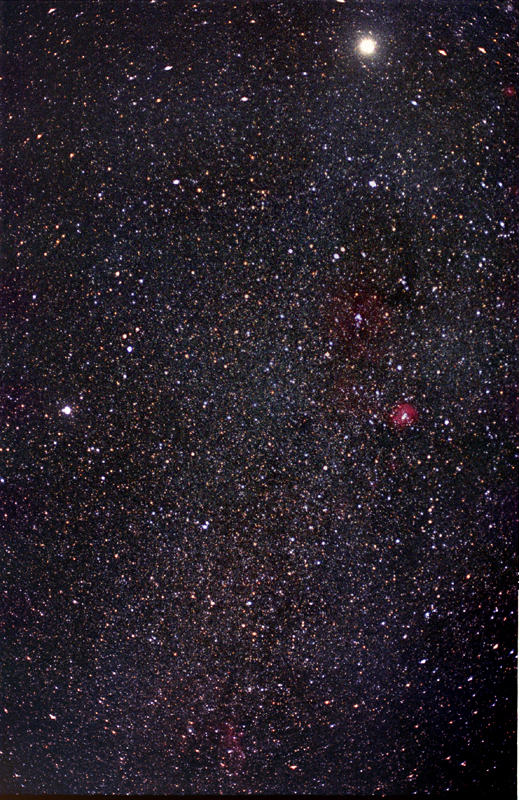
This photograph is centred a little to the east of the above photograph, allowing the brihgt star Procyon to come into the picture to the left of the Rosette nebula. The very bright object in the top of the image is the planet Jupiter.
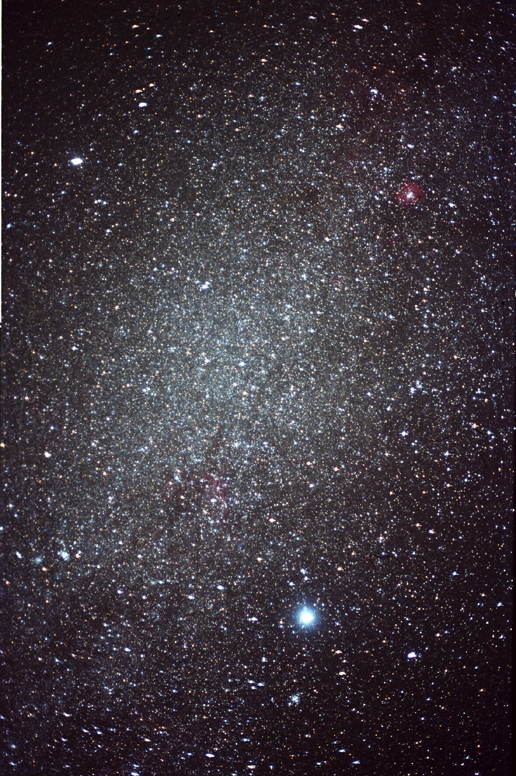
Moving the camera a little to the south allows part of the constellation Canis Major to enter the picture. The very bright star is Sirius, while above and left of Sirius is the emission nebula IC 2177 and the compact open cluster NGC 2353. Below Sirius is the bright open cluster M41.
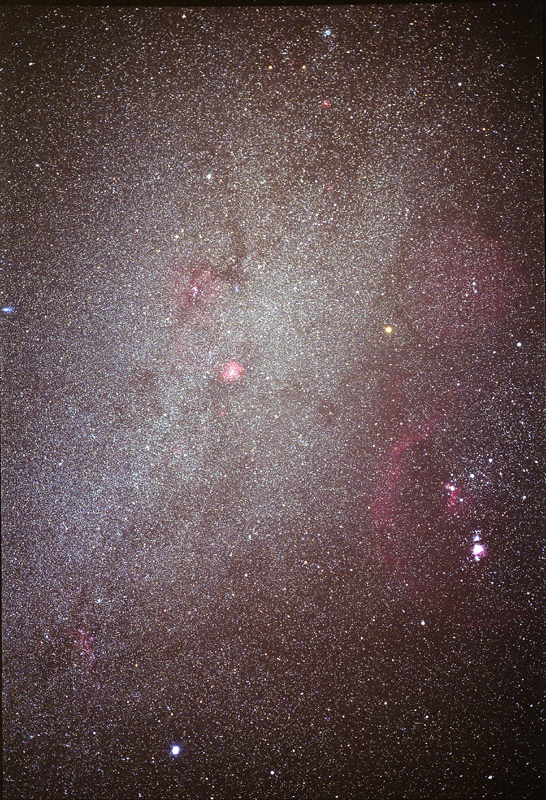
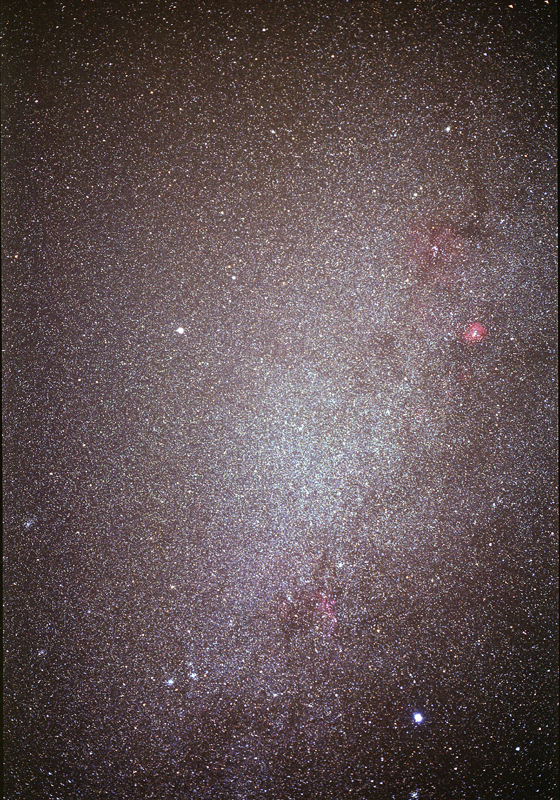
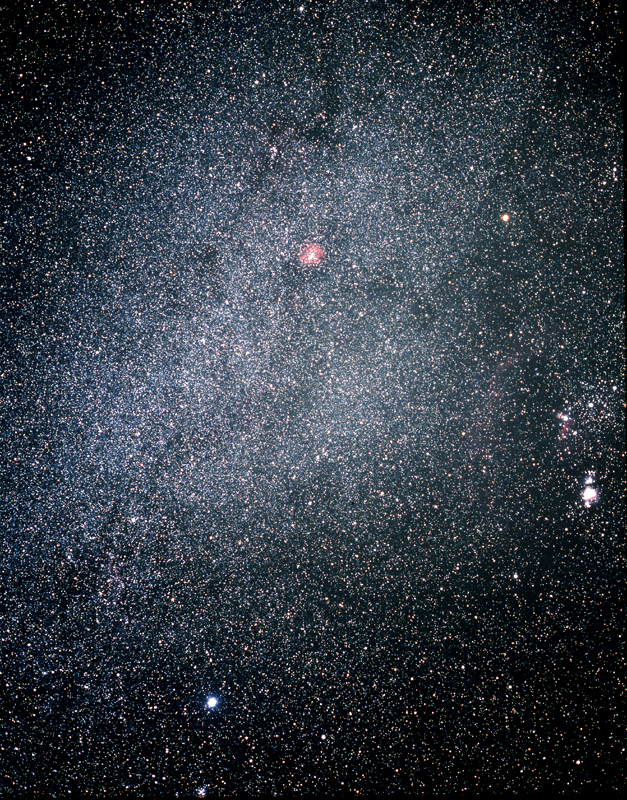
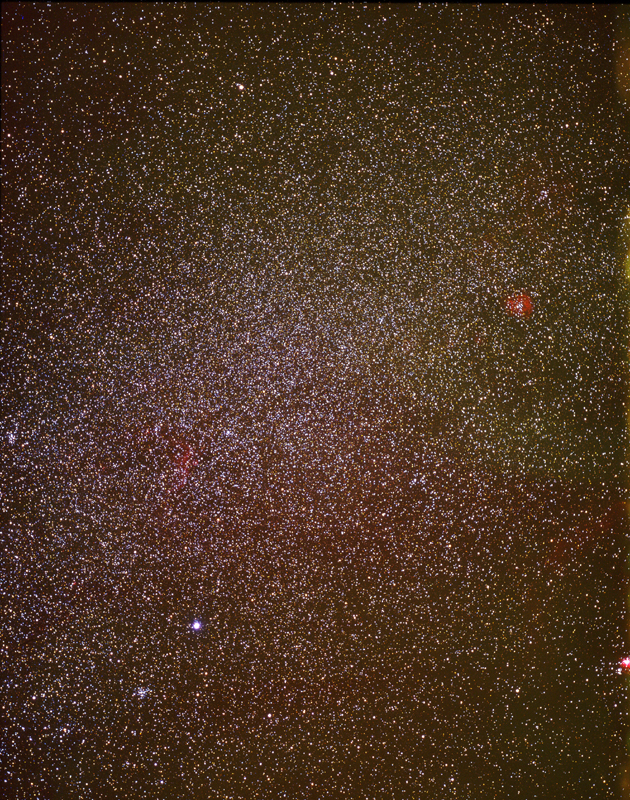
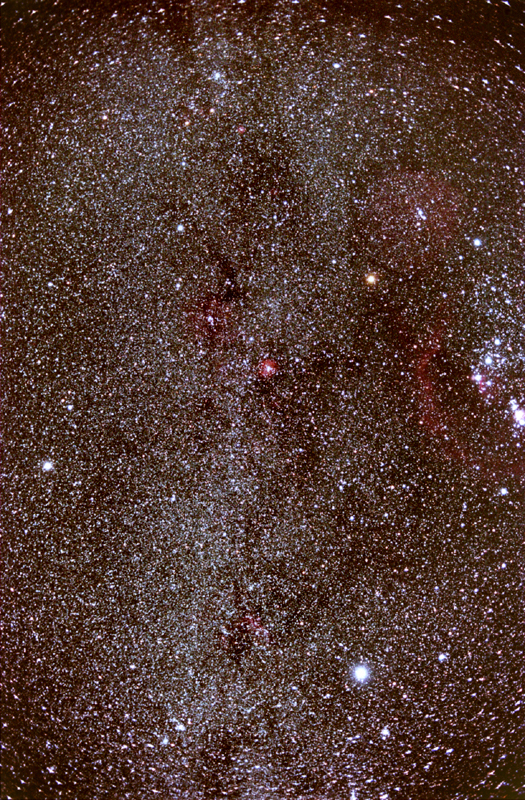
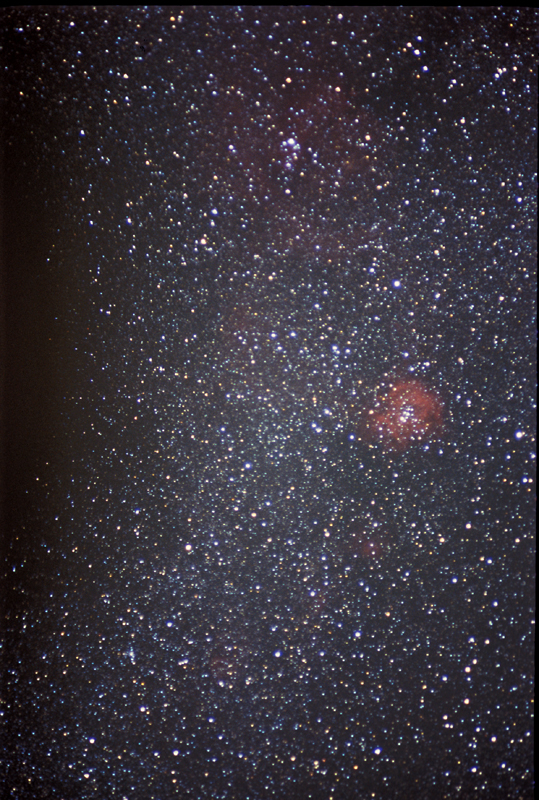
The central region of Monoceros showing the Rosette Nebula (NGC 2237 centre) and the Cone Nebula (Sharpless 2-273 Top).
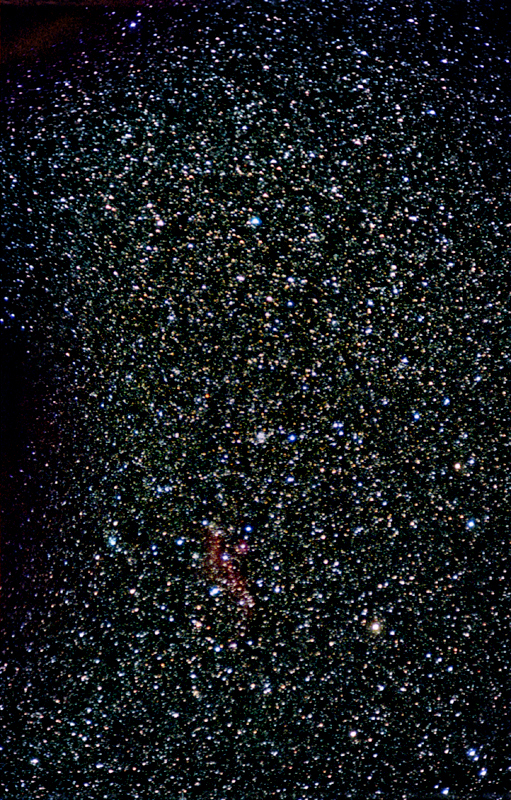
The southern region of Monoceros showing the Seagull Nebula (IC 2177).